H O T I D E A S F O R S M A L L R A I L R O A D S
One irresistible urge for designers of small layouts is the excitement of building working railways in small, enclosed
containers. Here are a group of splendid examples — ranging from coffee tables to cake safes, cookie tins and more!
Z SCALE IN A GUITAR CASE MAKES FABULOUS BIRTHDAY PRESENT!
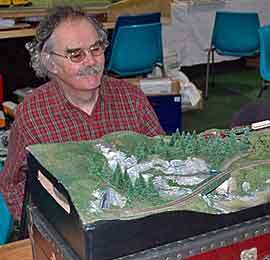
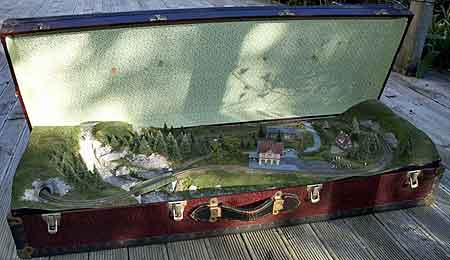
Will Vale, from Wellington, New Zealand, built Bahnhof Igelfeld in an old guitar case, as a birthday
present for his father, Robert (above left). It’s a Z scale line, measuring 1020x320mm (40×12½in), just wide
enough for the smallest Märklin curves at 145mm (5.7in) radius. The track plan is a scenic oval with one siding.
Will comments, “I tried to create a Nebenbahn (branch line) feel rather than cram in lots of trackage as seems sometimes
to be the trend with suitcase layouts. It was fun trying to get sensible scenery into the relatively limited vertical
space though. To test this aspect I installed all the trees, closed the lid, opened it and removed any which were bent
over at the top!”
The layout was first displayed to the public at Railex 2008 in Wellington last September (see Scrapbook #80)… Will is shown in the large
photo, at the far left behind Gavin Sowry’s right elbow, engrossed in operating Bahnhof Igelfeld). Believe it
or not, this was the first layout Will had ever completed! “I think building something which you can carry with one
hand and having a deadline completely fixed in stone were big helps in completing this,” he declares. For more, see
his Photo Gallery.

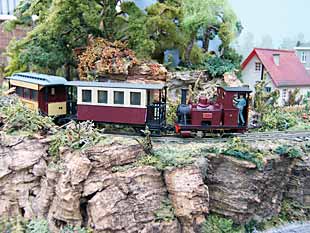


PORTABLE STAGE CAN HOLD A VARIETY OF LAYOUTS
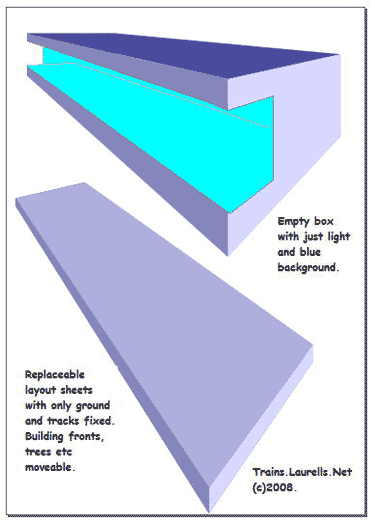
Henrik Laurell, from Gothenburg, Sweden, has created an unusual container. His original vision was to design a
“box with just lights and a blue background. In this box I will then put replaceable layout sheets for each new layout
I want to build. By doing so I can have as many layouts as I want, but each extra layout will only take up storage
space needed for a sheet standing up on its side. I think it’s a great idea for anyone who has space problems but
wants more than one layout.” In effect, Henrik has developed a portable stage for model layouts!
He continues, “One rather simple box contains only lights and a blue background. Then different ‘cassette’ layouts are
built to put inside. The big advantage is that each new layout will occupy only a few square inches of storage space.
Also, since construction is mostly thin plywood, the box is very light and easy to transport. If you have no room for
extras, store them on top of the lightbox. Each building-flat, tree or other scenic object should be loose, so you can
pile them up until you reach the roof.
“My example (below) is huge because I build in 7/8n18 scale (1:13.7), but your scale and layout size can be
whatever meets your needs. Finally, be sure to use Daylight fluorescent lamps, they are as close to outdoor light as
you can get.” (See Scrapbook #60 for
more lighting tips.)
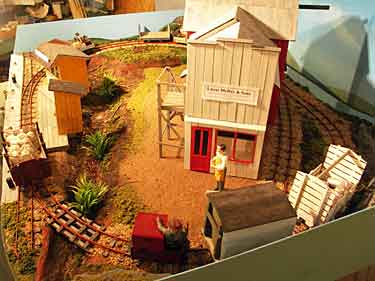
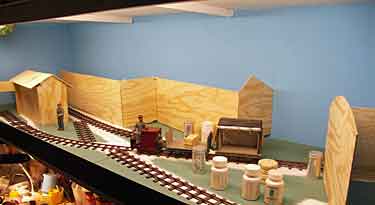
COOKIE TINS WELCOME RUSSIAN LAYOUTS IN HO AND Z
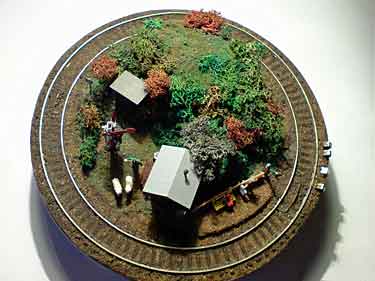
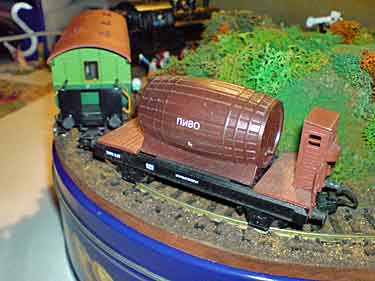
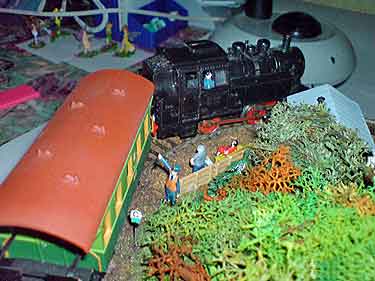
Alexander Shustov, from Puchino in the Moscow Region of Russia, has built two “pizza” layouts that fit into
cookie tins. The HO scale layout measures 26cm (10¼in) in diameter and features a
working semaphor signal. The scenery depicts a “Russian little country railroad”, and the cookie tin is from Denmark.
Track is Roco flex track. Pub habitués wlll have no trouble translating the sign identifying the contents of the
barrel car!
Alexander’s Z scale layout (photos below) is 13cm (5.1in) in diameter. The locomotive and track are Märklin,
and the water tower is made from cardboard. A versatile modeler, Alexander also works in TT scale, along with HO and
Z.
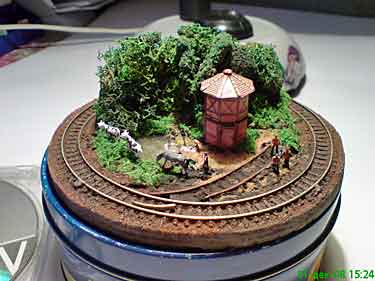
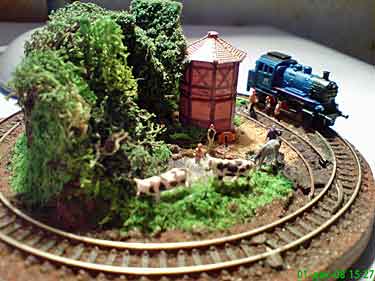
TROLLEY/TRAM LINE IN KNITTING CASE REVERSES POLES AUTOMAGICALLY
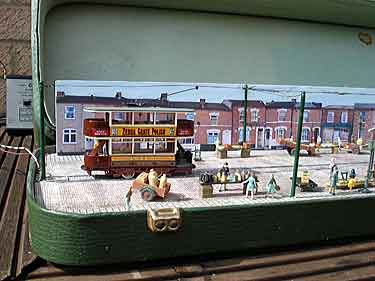
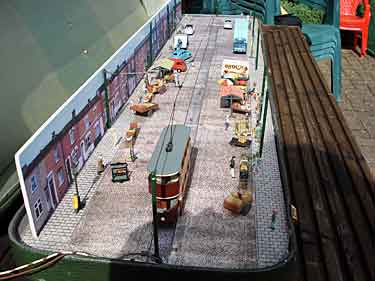
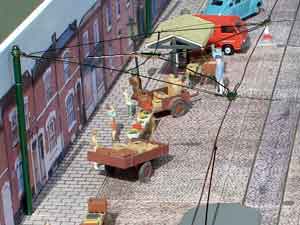

Meanwhile in the U.K. an old knitting machine case (bottom right), found at a garage sale, became the container
for a tram (trolley) layout built by Brian Wild. He writes, “The case is 39 inches long by 9 inches wide so I
limited things to just a a single track. The aim was to see if I could build a working trolley reverser… I made a
simple backscene based on photos of terraced houses near where I live here in the UK and added some accessories to
show a small street market. I normally model my trams in OO (4mm to the foot) scale, but I had to make this layout HO
scale so as to get the traction poles short enough that the case would actually shut. As my tram models were all OO
scale I had to motorise a Matchbox Preston Tram which is actually HO scale.
“After much fiddling with the overhead wires I managed to get a tram to shuttle back and forth along the layout using
an automatic timer with the poles reversing themselves at each end.” The (enhanced) close-up view of the overhead
wires at one end of Brian’s layout shows how the automatic pole reversal works. The key is the
triangle of wires reaching left from the main line wire. The tram pulls to the end of the line, then backs through the
assembly, with the pole moving through the frog and veering to the left as the tram continues forward. The pole
follows the wires through the rear frog, and then is pulled forward, back to the main line, as the tram continues on
its way. This is a considerable modeling feat… congratulations, Brian!
CAKE SAFE PROTECTS LAYOUT AIMED AT INFANT GRANDSON
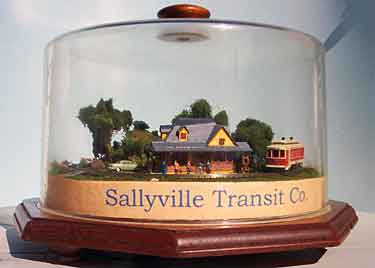
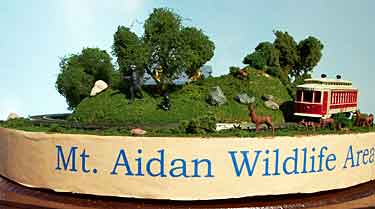
William Baldwin, from Los Osos, California, USA, was inspired by the interest in his trains shown by his
visiting daughter-in-law, Sally. William explains, “She has a new grandson who visits here often so Sallyville
Transit Co. serving the Mt. Aidan Wildlife Area came into being. Hopefully the cake cover will allow the layout to
survive for at least a little while. It is powered by a D cell battery pack for both safety and portability. A few
train swap meets produced the trolley, and a garage sale provided the cake safe.” The layout is 10½in in diameter, N
CONVALESCENT MODELER MAKES EXTRA-SMALL MICRO LAYOUT
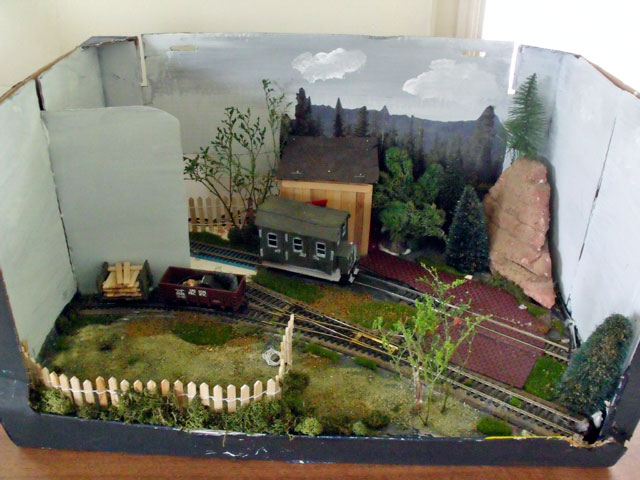
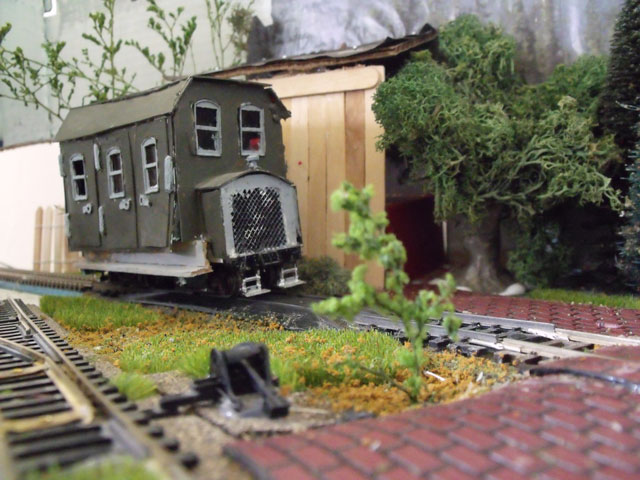
Laid up with a hip injury, Joshua Wolfe, from Shippensburg, Pennsylvania, USA, passed some of the time by
building this tiny HOn30/HOe layout, Northpoint Yard. It measures 3x8in (76x203mm) and fits into an HO track
box. The setting is rural New England. The tiny HOn30 steam engine enters from the hidden fiddle yard, is fueled at
the tank and departs back into the fiddle yard.
OF BOX FILES AND VIDEO CASES, WITH BIG TRAINS AND SMALL
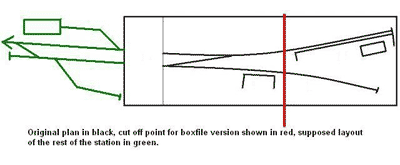
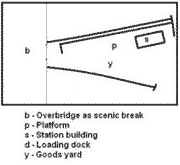
The ever-inventive Bob Hughes, from Sandbach, Cheshire UK, has produced Foxbaile, an anagramatic version
of the “boxfile” in which it’s made. At right, the diagrams show the evolution of the OO plan, which started as a
full-fledged station layout and was gradually cut shorter and shorter until the smaller plan (far right)
resulted, with the remainder consigned to our imaginations and represented by a fiddle yard.
The fiddle yard itself is somewhat unorthodox, in that it’s basically a Peco Loco Lift supported at each end by a
section of track (right photos)—one end being part of the layout, protruding slightly from the boxfile, and the
other a simple length of track with electric power attached. The power is relayed to the layout by the Loco Lift,
which bridges the gap. For more information about this railway, see its thread at RMWeb.

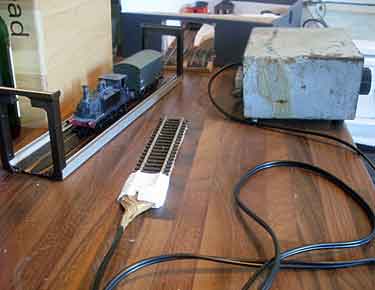
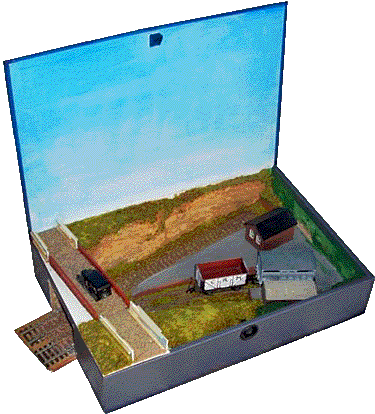
Pleased with the results of squeezing a station into a boxfile, Bob proceeded to raise the ante and tried out an O
scale layout in a video cassette box! Granted, it’s an O9 layout, representing an 18-inch gauge prototype by using 9mm
track, but it actually is 7mm scale in a pint-sized container! The VHS box measures approximately 7x4in (18x10cm).
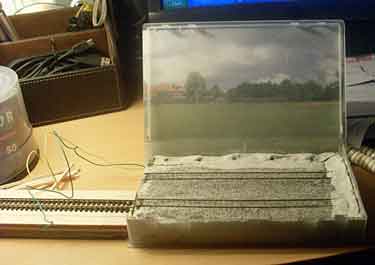
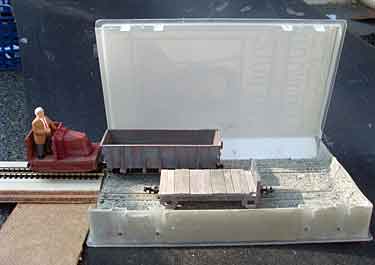
Apparently the game of squeezing ever-larger scales into increasingly smaller containers is spreading beyond Mr.
Hughes. Shown below on exhibition are Foxbaile (at the right and described above) beside a 7mm standard-gauge
layout using the same plan in the same sized boxfile! The (unnamed) O scale model was built by Jordan Foster,
Cradley Heath, West Midlands, England.
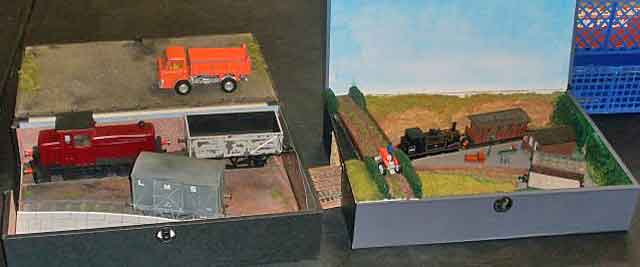
Said Jordan, “I’m going to try and use the lid as a loading dock, for vehicles to back up to wagons and tip their
loads (scrap or coal/ore/ballast) into the wagons on the straight track… I’ve finished the sides of the boxfile with
‘brick walls’ taken from a free Internet ‘Textures’ site,
printed onto ordinary paper and laminated to keep out the damp. These will be matt-varnished when the glue has dried
fully… I need to make a small cassette ‘fiddle siding’, which will have the power supply… It’s certainly taken off
rather more than I anticipated when I first stuck those bits of track inside it for a laugh!”
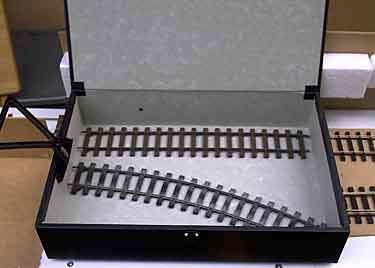
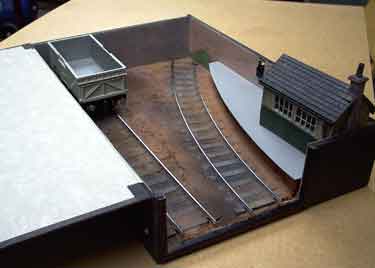
[Note to U.S. Modelers: Box Files are cardboard boxes measuring roughly 12x9x3in (30x23x7.6cm), used in British
and European offices to store correspondence and other documents written on A4 sheets of paper. They are virtually
unknown in the U.S. where file drawers have traditionally been used for this purpose, and more recently, digital
SHOEBOX AND BOX FILE HOLD INTERESTING N LAYOUTS
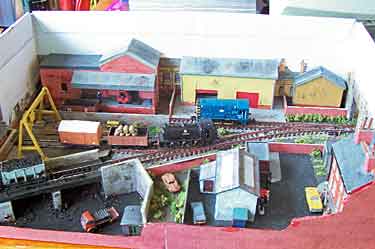
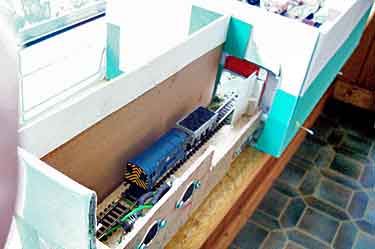
Clark’s Yard is an N scale layout built in a shoebox by Andrew Cockburn, from Tyne & Wear, England.
The name derives from the fact that the old box was from Clark’s shoes. It measures just 23×8½in (58x22cm), including
a small shunting spur/fiddle siding, which makes the layout completely self-contained.
Andrew comments, “The track plan is very similar to the Inglenook Sidings design. The layout is freelance industrial
shunting, with a private siding serving a small factory and warehouse, while a small goods/coal yard adds to
operational interest. Most of the buildings are scratch built from balsa, plastikard and brick/stone sheet, while one
or two kit-built structures are also in evidence along with essential small details such as people, cars, and the
like.
“The layout took about a month to build, and despite its diminutive stature and simple track plan, some basic but
interesting shunting operations are possible. It is also of course very portable, and makes an ideal space-filler, and
also perhaps a good ‘desktop toy.’ It may also serve as a source of inspiration for the modeller who is really space-
starved!”
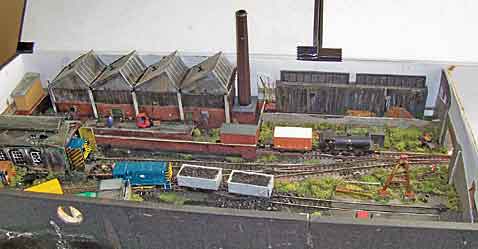
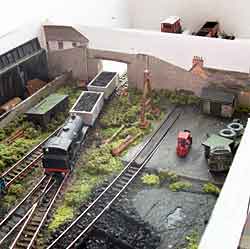
Andrew’s next attempt (his third) at a self-contained N scale shunting layout is Filey Yard, built in two
boxfiles joined together in a wooden framework and measuring about 2x1ft (60x30cm). The track plan is similar to
Clark’s Yard, but adds a kick-back siding at the front edge, to make operations more complex and interesting.
Andrew declares, “The layout features a private siding serving a factory, a small goods/coal yard and also a small
steam-turned-diesel shed to add a bit more operational interest… As with Clark’s Yard the setting is the BR
blue period of about late 70’s-early 80’s. Filey Yard took about six months to construct, and I have to say it
has given me a lot of pleasure both in construction and operation, and I also hope to exhibit it in the not-too-
A SHAME TO WASTE A GOOD COFFEE TABLE ON JUST COFFEE!
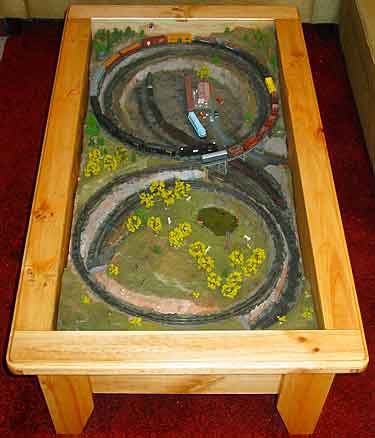
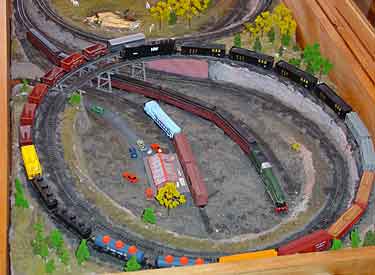
Darren Baker, who lives in Ettalong Beach, New South Wales, Australia, built this “double eight” N-scale layout
in a 1200x600mm (47.2×23.6in) coffee table. And yes, that is one very long freight train you can see in the photos!
There’s lots more pictures of Darren’s layout on his Flickr page and in his YouTube video.
Coffee-table layouts seem to be in vogue again this year—here’s another good example from Johnny Bakane, in
Louisville, Kentucky, USA. Pine Ridge portrays the D&RGW in Colorado’s Pinecliff area and Moffat Tunnel
district. As Johnny puts it, “My layout is 18x39in [45x100cm], complete with a blasted rock wall, a pass through a
valley, tunnel through a mountain, coal mine, two switches, a diamond crossing and a truck terminal.” And there’s also
a YouTube video to be seen.
CARPENTRY-CAPABLE HOBBYISTS MIGHT BUILD A SIDEBOARD… OR TWO
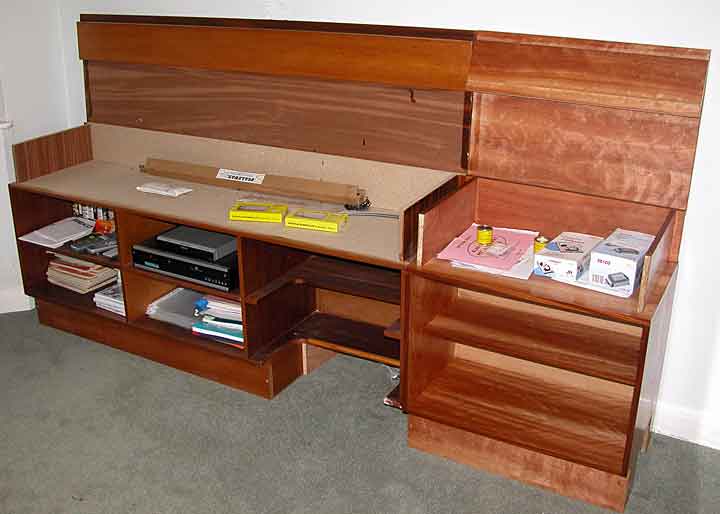
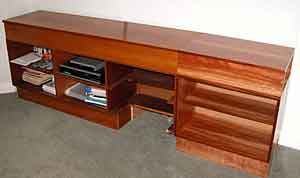
Martin Akehurst, who lives in Henley-on-Thames, Oxfordshire, England, was faced with the common problem of lack
of space. He decided to make some “specialist furniture” to handle the issue. The result is pictured here. Martin
decribes it this way: “The two sideboard (cabinet) tops convert into a running track and fiddle yard, with a cutout to
enable me to sit when in use. The whole is made out of 3/8in hardwood veneer faced chipboard. The top hinges back on
two long ‘piano hinges’—so far so good.” Martin plans a UK Great Western and London Undergound layout in EM gauge to
be housed in this grand container. Watch for developments!
EVER SEE A LAYOUT IN A BRACES BOX?
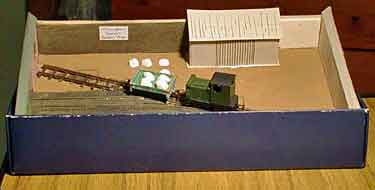
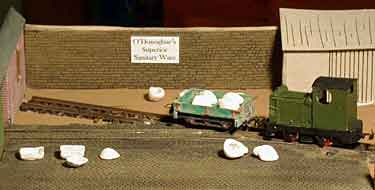
Frequent contributor Richard Glover, a long-time active member of the Greenwich & District Narrow Gauge
Railway Society in England, can tell the unlikely story of the braces-box layout better than anyone: “In 2004 I
decided to make a very small layout to take to Expométrique [an annual, narrow-gauge exhibition in France]. Other
G&D members had built layouts in shoeboxes, so I looked for something smaller and chose a box which had contained
braces (for trousers). [Americans call them ‘suspenders’.]
“The available space was 24.5×13.5×4.5cm [9½x5x1¾in]. I built the OO9 model on a rectangle of thin MDF, using Peco N
Gauge Set Track with alternate sleepers removed to represent the lightweight ‘tinplate style’ track often used on
simple narrow gauge lines.
“I ran out of time to complete the model, which is why some buildings are still card mock-ups and only a part of the
ground is covered with stone setts. I named the model O’Donoghue’s Superior Sanitary Ware after my good friend
Chris O’Donoghue, who was a potter at the time. [Chris is now a prize-winning garden designer and also a contributor
to these pages.]
“The little Ruston loco shunted back and forth and coupled and uncoupled the wagon for all three days of Expométrique.
I attempted to provide suitable loads by modelling sinks and other ceramic products in modelling clay. However, on the
final day the loco gave a puff of smoke and expired with a burntout motor. I was able to keep on running with a spare
loco, but this one was too tall to pass through the doors on either side. So it would only have been of limited use in
real life!
“Sadly, I never did finish the model, so it exists today just as you can see it in these photos.” Thank you, Richard,
for flushing out some information about this little-known chapter of micro layout history!
HOW ABOUT A SHOEBOX IN THE BRONX?
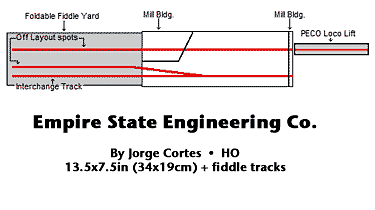
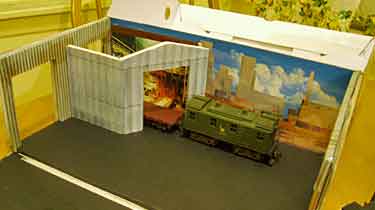
Jorge Cortes, from the Bronx, New York City, USA, has just started building the Empire State Engineering
Co., but as you can tell by the name, he has great plans for it. Jorge comments, “The layout represents part of an
engineering works that manufactures heavy equipment, silos for industrial plants and structural steel parts. Its being
built in a shoebox that I found in the trash, and it measures 13½x7½in [34x19cm].
“Traffic on the layout will move from the bottom left hand interchange track to the upper left siding for spotting,
via a Peco Loco Lift on the right side of the layout. The fiddle yard on the left will be foldable so it fits in the
box for storage and travel. The tracks on top will extend through the building on the left and out the box for more
spots. The time frame for the layout will be the 1950’s to the early 1980’s, so a wide variety of locomotives and cars
can be used.”
CLASSIC BRIEFCASE LAYOUT FEATURES UNUSUAL SCENERY
Chris Coetzer, who lives in South Africa’s Gauteng province and is a member of the local N Scale Guild of South
Africa, built his first Z scale layout after he found an old pneumatic-instrument calibrator case while cleaning out
his workshop. It was perfect for a Z scale set up, measuring 445x320x150mm [17.5×12.6×5.9in]. He named the layout
Tassenberg, which in his home language means case or suitcase (‘tas’) and mountain (‘berg’).
Chris reports, “I spent about 60 hours altogether on the project. The track is Märklin, and so are the locomotive and
rolling stock. I bought a Zthek Snail Speed Controller on
E-bay for the layout and must commend them, because it is a great little controller. A 9v battery lasts amazingly long
and you can really run a loco at a snail’s pace.”
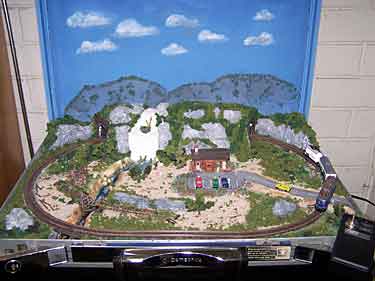
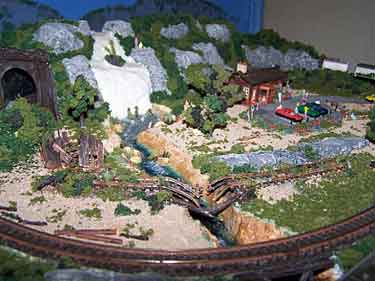
ELECTRIC GUITAR SHIPPING BOX HOUSES NICE N LAYOUT
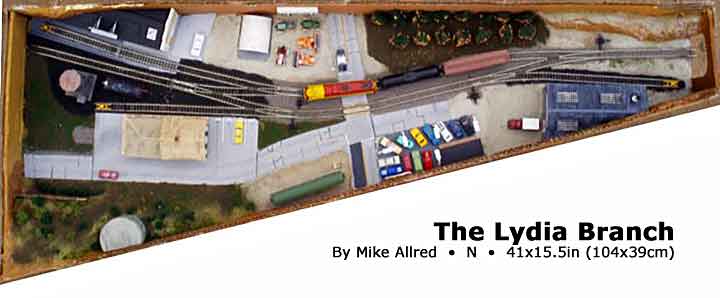
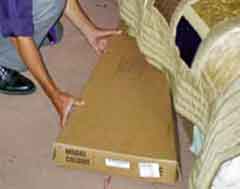
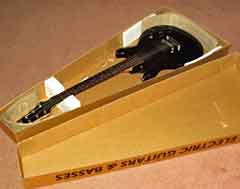
We started this page with an excellent layout built in a guitar box, and we’ll end with another. Mike Allred, from
Norco, California, USA, built the Lydia Branch in a guitar shipping box that measures 41×15½in (104x39cm). According
to Mike, “This N scale micro-layout represents the end point of a small branch line which serves the town of Lydia;
hence ‘The Lydia Branch.’ The era is sometime in the autumn of 1972… My layout is a switching layout. After being so
used to larger layouts with long main line runs, I was surprised to learn how much time I could spend just switching
cars. If there are more than three cars ‘in the box’ at any one time, engine movements require some advance thought!
“I’ve been pleasantly surprised to learn just how much detail I can place in a micro layout without looking overly
busy. All it takes is a little planning and a little thinking ‘outside the box’ (pardon the pun…I just couldn’t
resist!). Another plus: all these photos were taken with the advantage of outdoor sunlight, something I was never able
to achieve with large pikes. Photography is greatly simplified with a micro-layout.
” Finally, the layout is covered and slid under the bed when not in use.” For more information and photos of this
delightful little line, see Mike’s website.
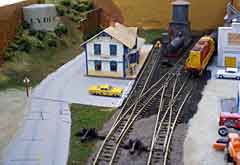
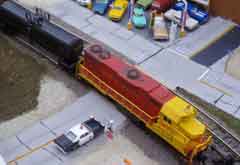
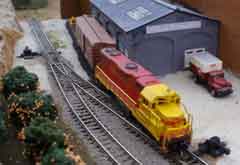

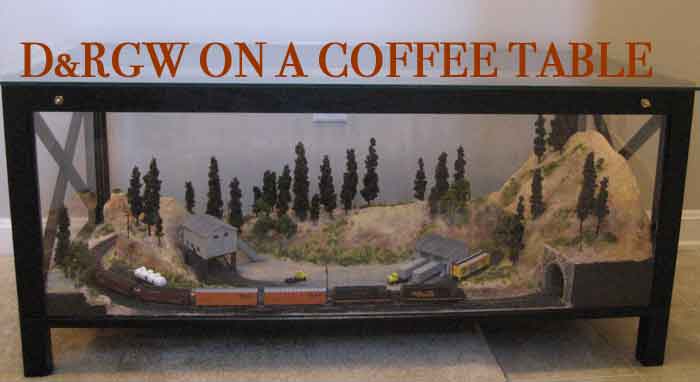
Leave a Reply